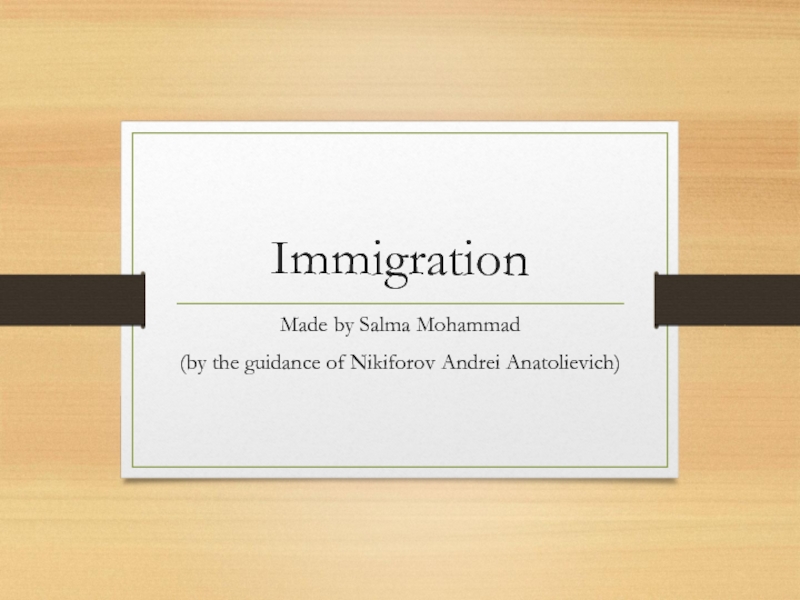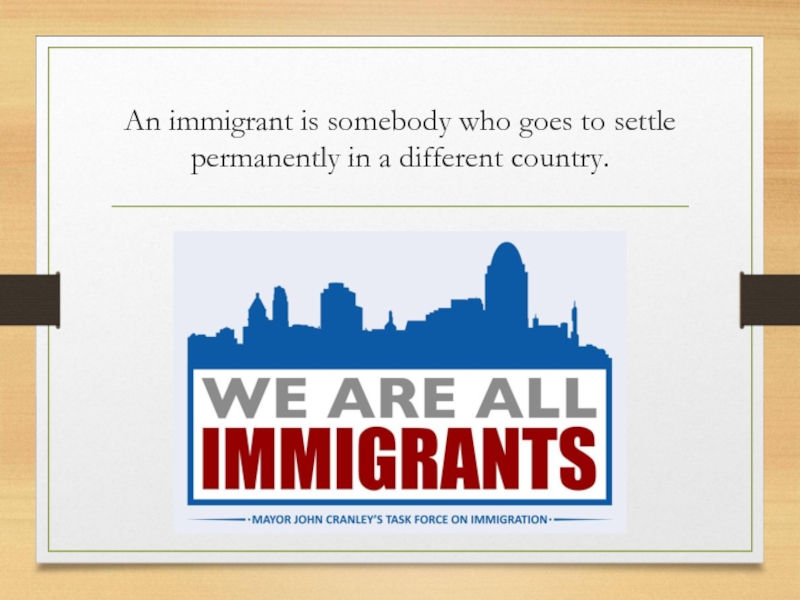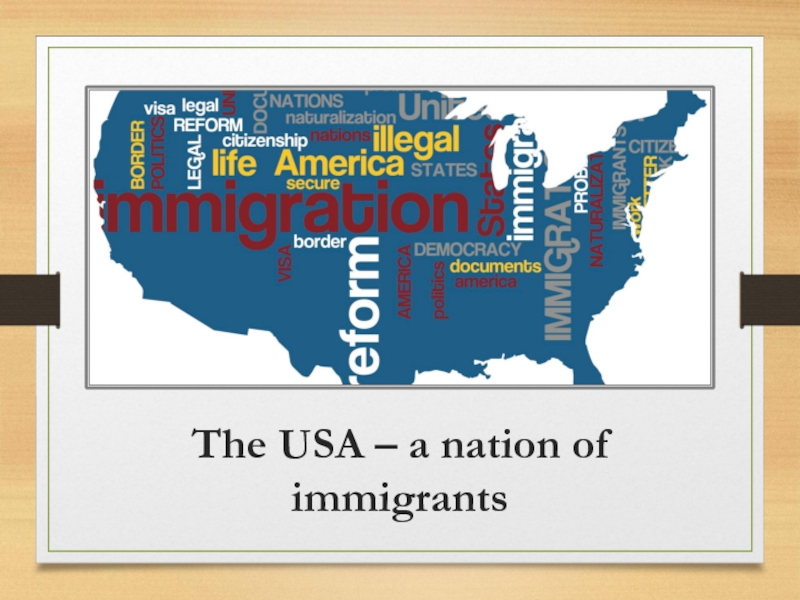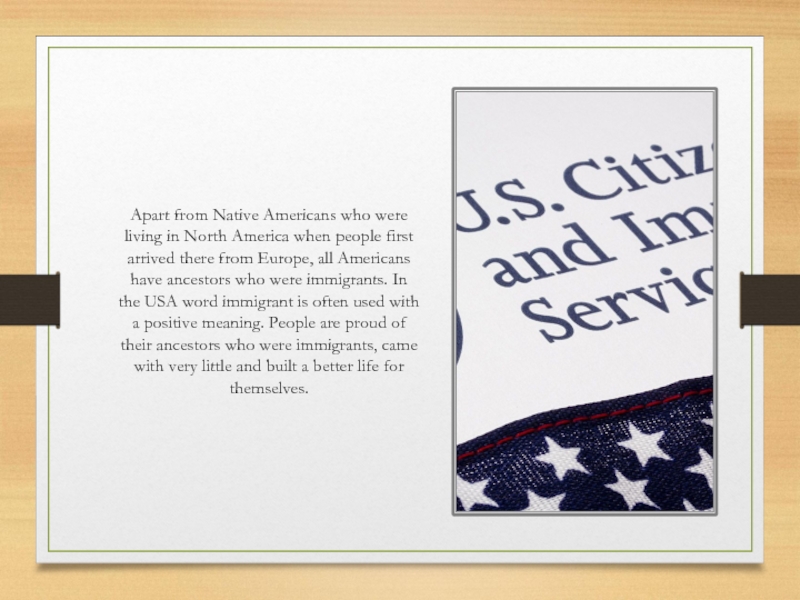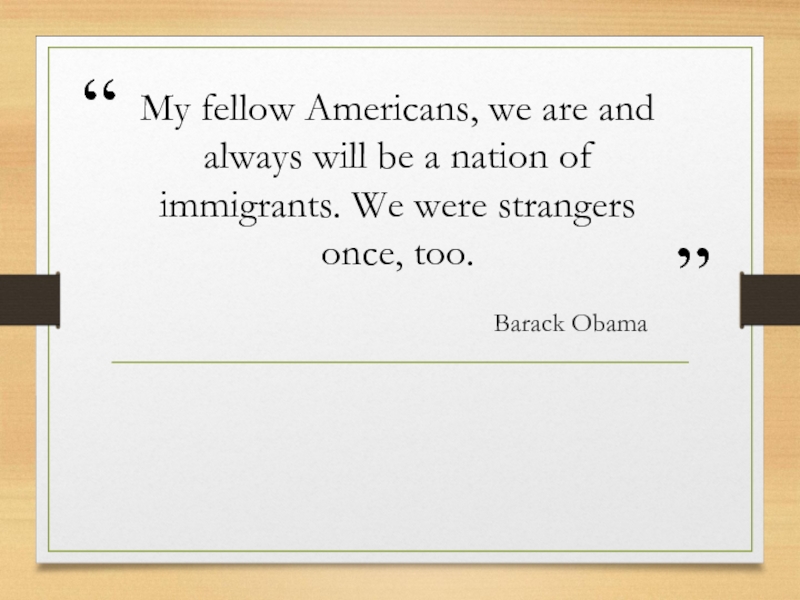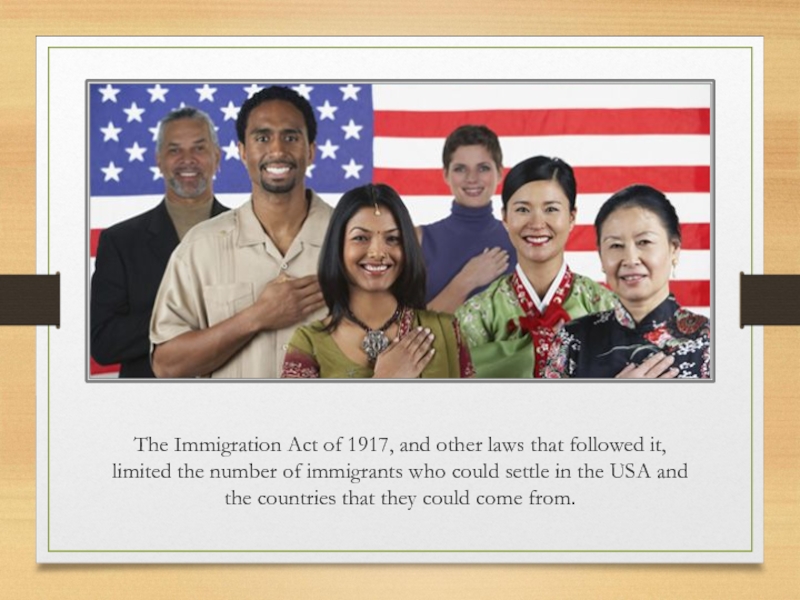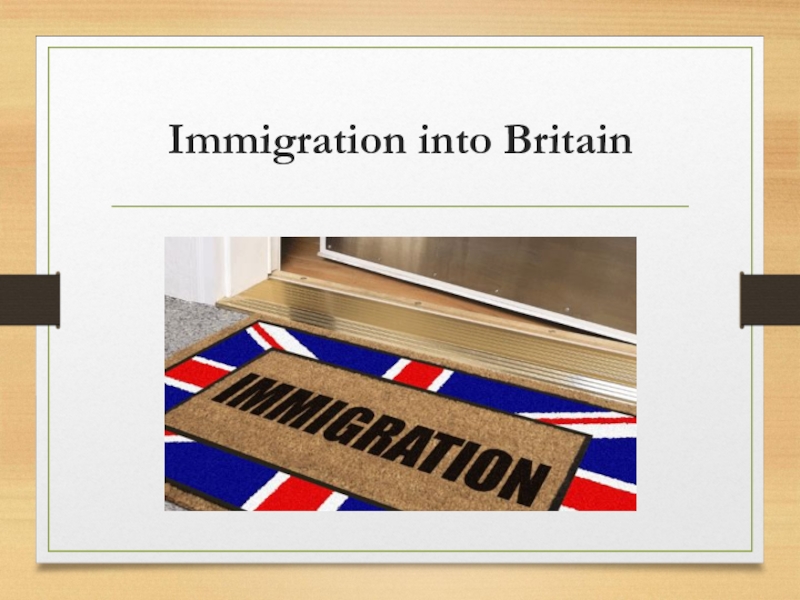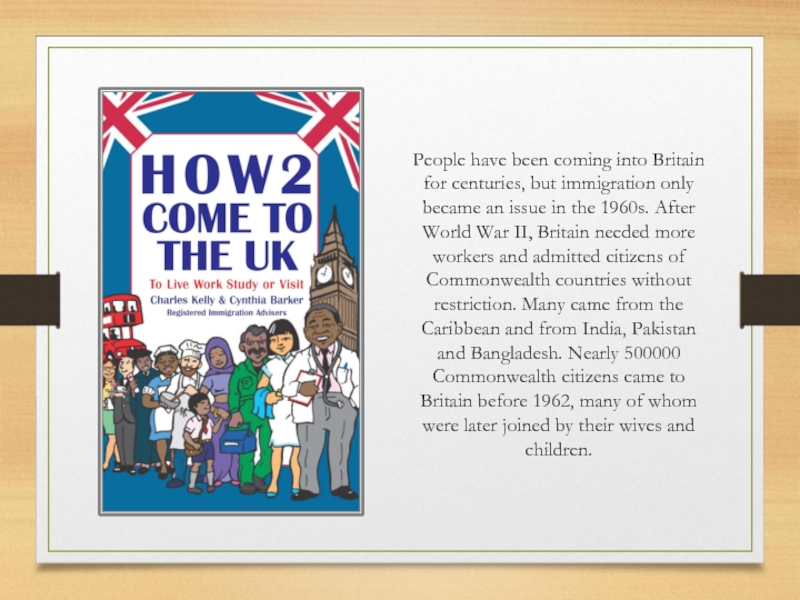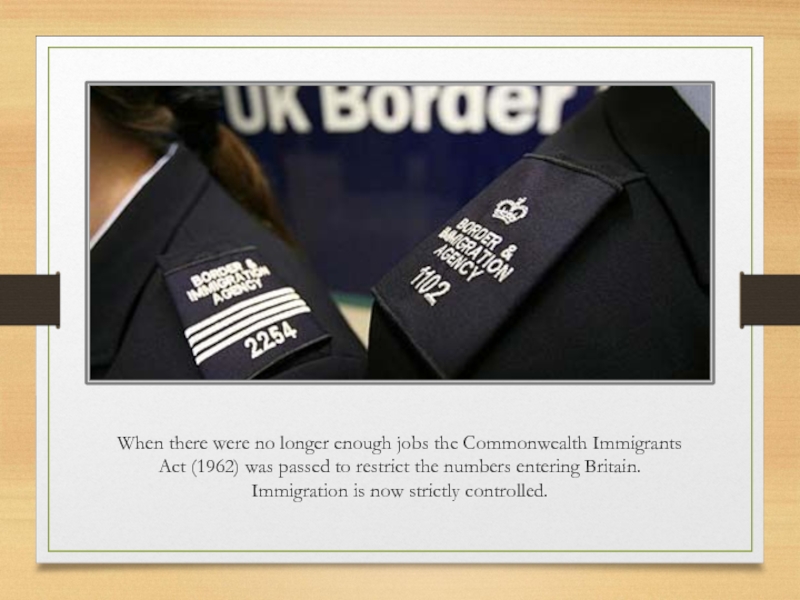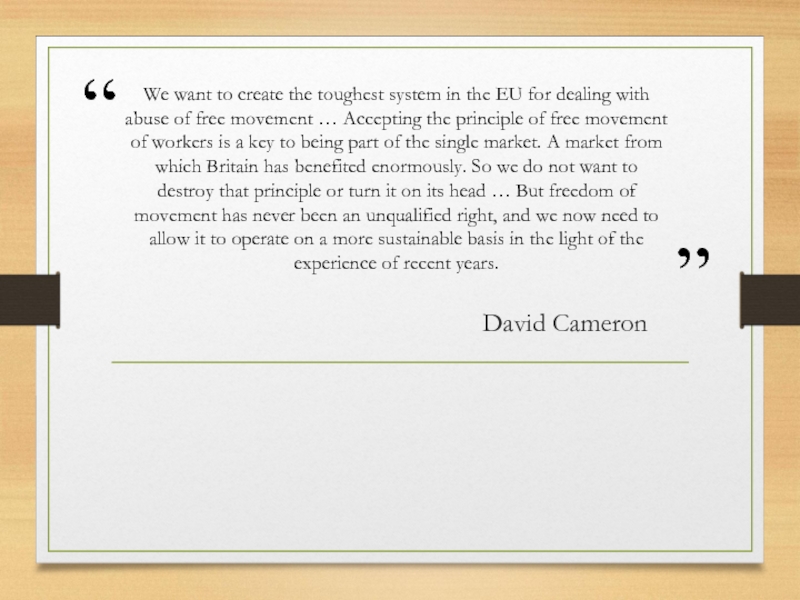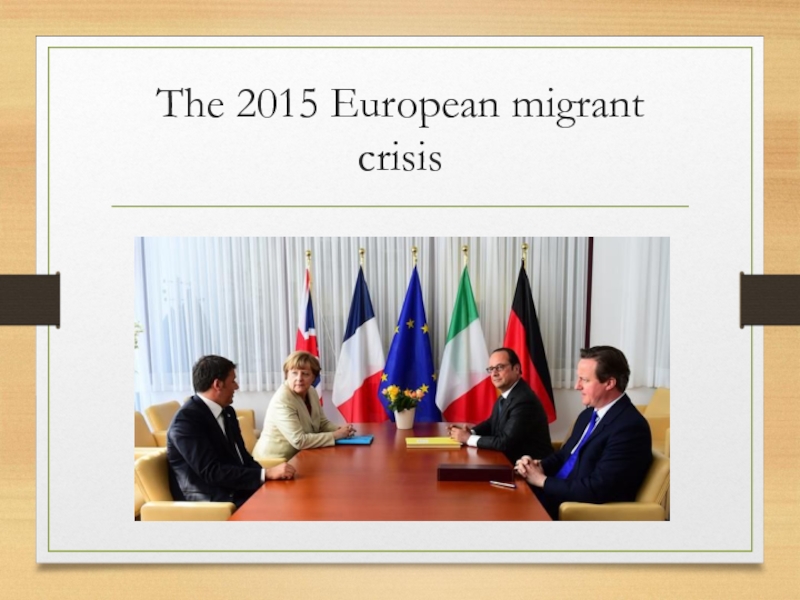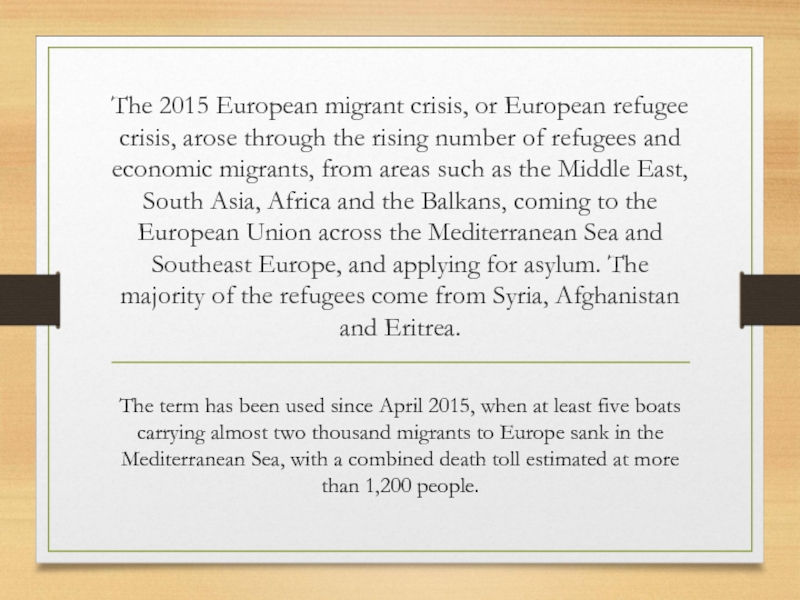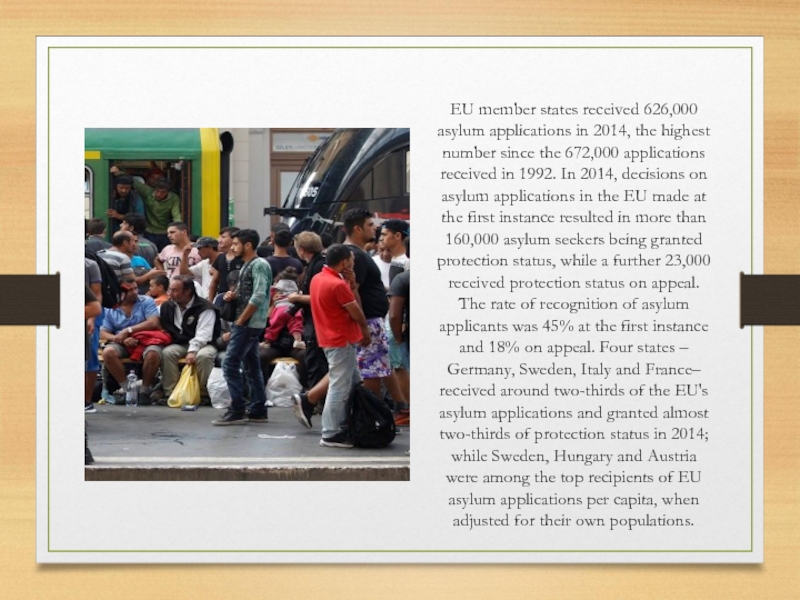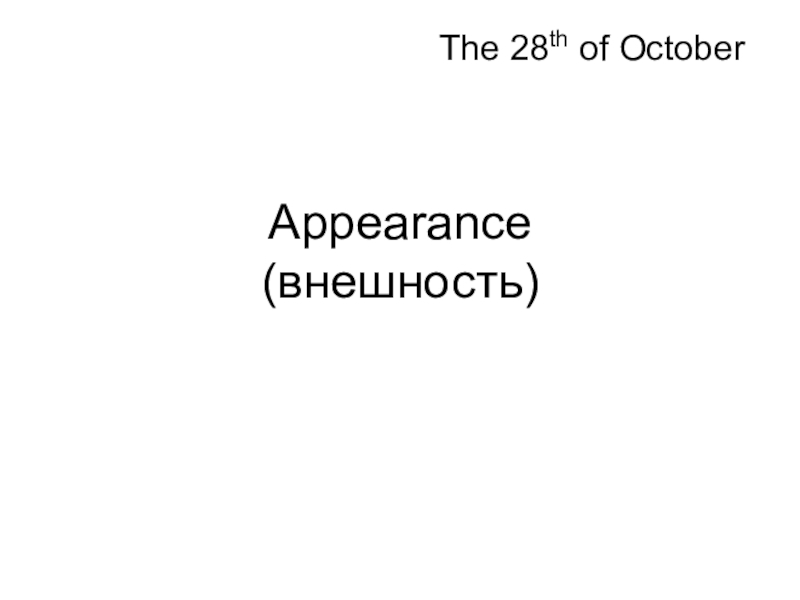- Главная
- Разное
- Образование
- Спорт
- Естествознание
- Природоведение
- Религиоведение
- Французский язык
- Черчение
- Английский язык
- Астрономия
- Алгебра
- Биология
- География
- Геометрия
- Детские презентации
- Информатика
- История
- Литература
- Математика
- Музыка
- МХК
- Немецкий язык
- ОБЖ
- Обществознание
- Окружающий мир
- Педагогика
- Русский язык
- Технология
- Физика
- Философия
- Химия
- Шаблоны, фоны, картинки для презентаций
- Экология
- Экономика
Презентация, доклад по английскому языку Immigration
Содержание
- 1. Презентация по английскому языку Immigration
- 2. An immigrant is somebody who goes to settle permanently in a different country.
- 3. The USA – a nation of immigrants
- 4. Apart from Native Americans who were living
- 5. My fellow Americans, we are and always
- 6. The Immigration Act of 1917, and other
- 7. Immigration into Britain
- 8. People have been coming into Britain for
- 9. When there were no longer enough jobs
- 10. We want to create the toughest system
- 11. The 2015 European migrant crisis
- 12. The 2015 European migrant crisis, or European
- 13. EU member states received 626,000 asylum applications
- 14. Thank you for your attention!
An immigrant is somebody who goes to settle permanently in a different country.
Слайд 4Apart from Native Americans who were living in North America when
people first arrived there from Europe, all Americans have ancestors who were immigrants. In the USA word immigrant is often used with a positive meaning. People are proud of their ancestors who were immigrants, came with very little and built a better life for themselves.
Слайд 5My fellow Americans, we are and always will be a nation
of immigrants. We were strangers once, too.
Barack Obama
Слайд 6The Immigration Act of 1917, and other laws that followed it,
limited the number of immigrants who could settle in the USA and the countries that they could come from.
Слайд 8People have been coming into Britain for centuries, but immigration only
became an issue in the 1960s. After World War II, Britain needed more workers and admitted citizens of Commonwealth countries without restriction. Many came from the Caribbean and from India, Pakistan and Bangladesh. Nearly 500000 Commonwealth citizens came to Britain before 1962, many of whom were later joined by their wives and children.
Слайд 9When there were no longer enough jobs the Commonwealth Immigrants Act
(1962) was passed to restrict the numbers entering Britain. Immigration is now strictly controlled.
Слайд 10We want to create the toughest system in the EU for
dealing with abuse of free movement … Accepting the principle of free movement of workers is a key to being part of the single market. A market from which Britain has benefited enormously. So we do not want to destroy that principle or turn it on its head … But freedom of movement has never been an unqualified right, and we now need to allow it to operate on a more sustainable basis in the light of the experience of recent years.
David Cameron
Слайд 12The 2015 European migrant crisis, or European refugee crisis, arose through
the rising number of refugees and economic migrants, from areas such as the Middle East, South Asia, Africa and the Balkans, coming to the European Union across the Mediterranean Sea and Southeast Europe, and applying for asylum. The majority of the refugees come from Syria, Afghanistan and Eritrea.
The term has been used since April 2015, when at least five boats carrying almost two thousand migrants to Europe sank in the Mediterranean Sea, with a combined death toll estimated at more than 1,200 people.
Слайд 13EU member states received 626,000 asylum applications in 2014, the highest
number since the 672,000 applications received in 1992. In 2014, decisions on asylum applications in the EU made at the first instance resulted in more than 160,000 asylum seekers being granted protection status, while a further 23,000 received protection status on appeal. The rate of recognition of asylum applicants was 45% at the first instance and 18% on appeal. Four states – Germany, Sweden, Italy and France– received around two-thirds of the EU's asylum applications and granted almost two-thirds of protection status in 2014; while Sweden, Hungary and Austria were among the top recipients of EU asylum applications per capita, when adjusted for their own populations.
